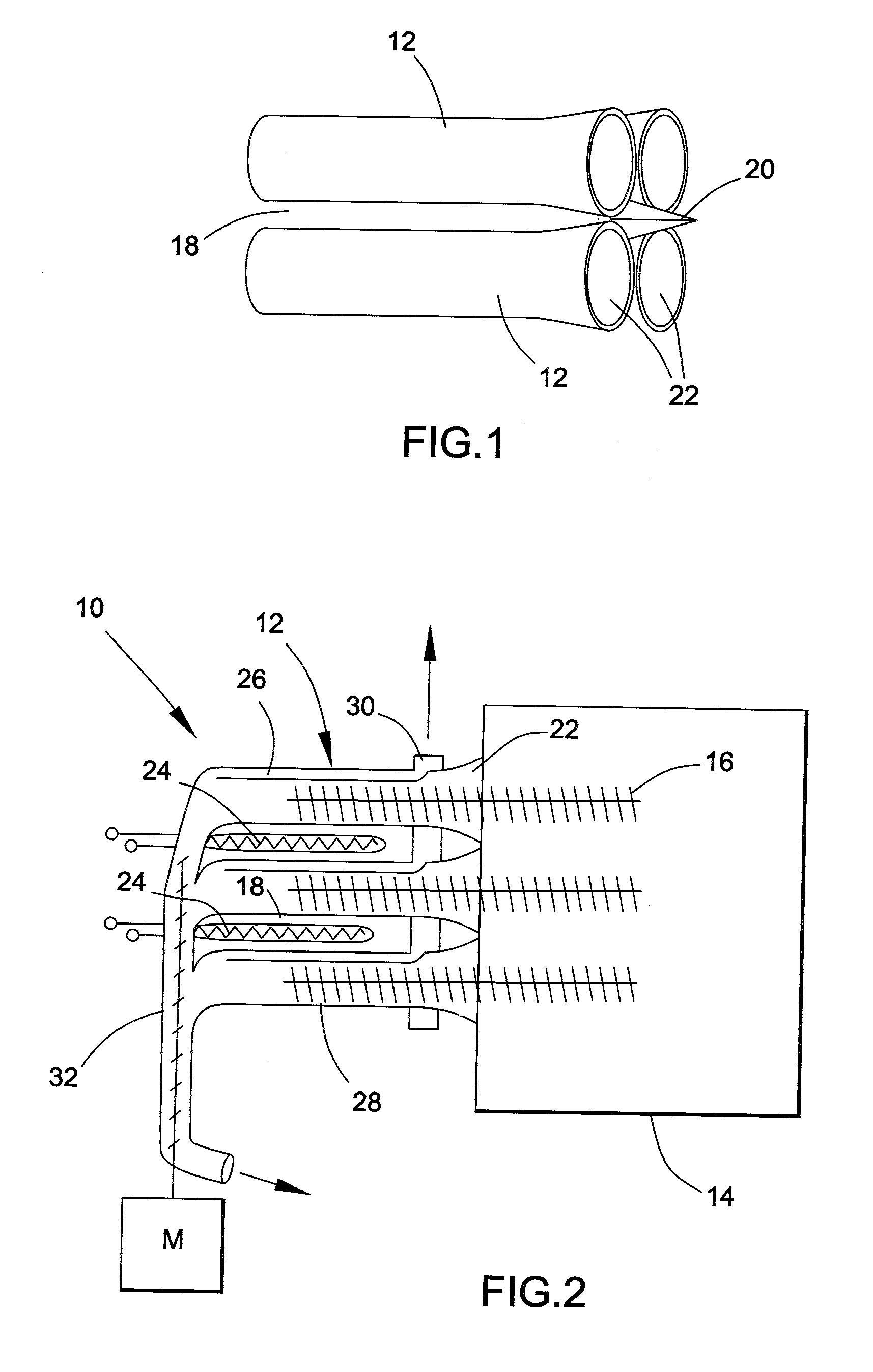Scalable biomass reactor and method
a biomass reactor and biomass technology, applied in the field of conversion of organic lignocellulosic materials, can solve the problems of equipment adding to system complexity and size, inconvenient use of output gas for gas turbines, storage, etc., and achieves large throughput capacity and efficient production of synthesis gas
- Summary
- Abstract
- Description
- Claims
- Application Information
AI Technical Summary
Benefits of technology
Problems solved by technology
Method used
Image
Examples
Embodiment Construction
[0017]FIGS. 1 and 2 represent basic concepts relating to a scalable biomass gasifier system in accordance with preferred aspects of the invention. FIG. 1 represents four parallel reactor tubes 12 of a scalable biomass gasifier system 10 represented in FIG. 2. The reactor tubes 12 serve as the containment vessel in which the gasification process occurs, producing syngas as a desired product and dry ash as a byproduct. In FIGS. 1 and 2 further represent the tubes 12 configured in an array (linear, planar, or convex surface), into which biomass particles (not shown) are delivered from a bulk hopper 14 via any suitable type of feeder device 16, represented in FIG. 2 as an auger though other methods of delivery are also within the scope of the invention, such as through the use of a ram or by gravity feed. The reactor tubes 12 are packed together so that incoming biomass does not enter the interstices 18 between adjacent tubes 12. For example, a deflector 20 is represented in FIG. 1 as b...
PUM
| Property | Measurement | Unit |
|---|---|---|
| temperature | aaaaa | aaaaa |
| volatilization temperature | aaaaa | aaaaa |
| volatilization temperature | aaaaa | aaaaa |
Abstract
Description
Claims
Application Information
 Login to View More
Login to View More - R&D
- Intellectual Property
- Life Sciences
- Materials
- Tech Scout
- Unparalleled Data Quality
- Higher Quality Content
- 60% Fewer Hallucinations
Browse by: Latest US Patents, China's latest patents, Technical Efficacy Thesaurus, Application Domain, Technology Topic, Popular Technical Reports.
© 2025 PatSnap. All rights reserved.Legal|Privacy policy|Modern Slavery Act Transparency Statement|Sitemap|About US| Contact US: help@patsnap.com



